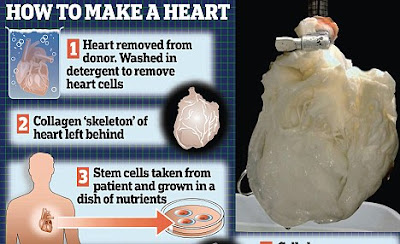Is Blood Blue Before It Hits Oxygen?
 Did you know?
Did you know?
Are you pumped for today’s colorful Wonder of the Day? We hope so, because it’s a real life saver. What are we talking about? Blood, of course!All parts of your body need blood. The movement of blood through your heart and around your body is called circulation.
When blood leaves your heart, it moves through tubes called blood vessels. There are three types of blood vessels: arteries, veins and capillaries.
Arteries carry blood away from the heart to other parts of your body. As they get farther and farther away from the heart, arteries transfer blood to tiny blood vessels called capillaries. Capillaries transfer the oxygen and nutrients in the blood to cells that need it.
As cells use the oxygen and nutrients in blood, they also produce waste, including carbon dioxide. The capillaries take the carbon dioxide and other waste materials and transfer them to veins, which carry these items in the blood that returns back to the heart.
When the blood returns to the heart, the heart pumps it to the lungs. In the lungs, carbon dioxide is taken out of the blood and exhaled back into the air. With each new breath, oxygen enters the lungs and restores the blood before it is pumped back out to the body’s cells. Then the process starts all over again.
How long does this whole process take? Not long at all! Your heart can pump blood to all the cells in your body in less than 60 seconds. That’s under a minute!
Since arteries carry oxygen-rich blood away from the heart and veins carry oxygen-depleted blood back to the heart, some people believe that veins appear blue because blood without oxygen is blue. But it’s not true!
Blood is always red. Oxygen-rich blood is bright red as it leaves the heart. When it returns in veins without much oxygen, it’s still red, but it’s a deeper, darker red. So why do veins look blue?
It all has to do with the science of light. The colors we see are the result of which wavelengths of light are reflected back to our eyes. Veins appear blue because blue light is reflected back to our eyes.
This may seem odd, since veins contain deep, dark red blood. Scientists believe there are several factors that lead to our seeing veins as blue rather than red.
Blue light does not penetrate human tissue as deeply as red light does. As a result, veins that are close to the surface of the skin will be more likely to reflect blue light back to the eye.
The oxygen-depleted blood that veins carry also tends to absorb red light more than blue light. When the dark red blood absorbs more red light, blue light is more likely to be reflected back to our eyes.
Scientists also believe that blue light tends to scatter and reflect more easily when it passes through human tissue. This also contributes to veins appearing blue despite the dark red blood within them.
NOTE:
Human blood is actually dark red that looks black. We see it as red, because once air hits it, it turns red. But in the body it so deep red that it is black.
There is a lot of speculation of the colour of blood in our bodies. The colour of our blood is infact red, some people believe that its blue because thats the colour of our veins. The blood in our veins are a deep red, which is why when looking at our veins it looks blue.












